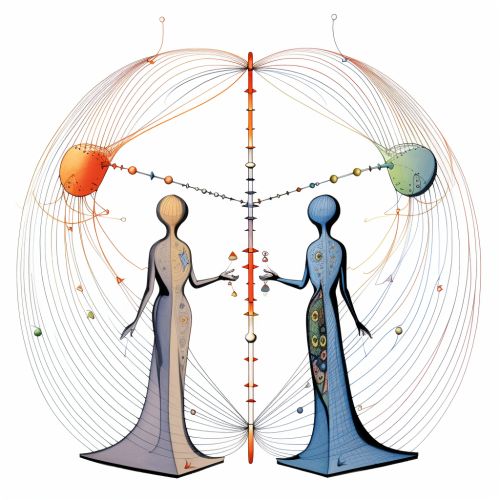Poincaré duality theorem
Introduction
The Poincaré duality theorem is a fundamental principle in the field of topology, particularly in its branch known as algebraic topology. Named after the French mathematician Henri Poincaré, the theorem establishes a relationship between the homology and cohomology of a manifold, providing a deep insight into the structure of topological spaces.


Background
The Poincaré duality theorem was first introduced by Henri Poincaré in the early 20th century. Poincaré's work in topology, and in particular his development of this theorem, has had a profound impact on the field, influencing a wide range of mathematical disciplines including differential geometry, algebraic geometry, and mathematical physics.
Statement of the Theorem
The Poincaré duality theorem can be stated as follows: For a compact oriented manifold M of dimension n, there is a natural isomorphism between the kth homology group and the (n-k)th cohomology group. Symbolically, this is represented as:
H_k(M) ≅ H^n−k(M)
This statement implies that the topological features of a manifold can be understood in terms of both homology and cohomology. The theorem thus provides a powerful tool for studying the properties of manifolds.
Homology and Cohomology
In order to understand the Poincaré duality theorem, it is necessary to have a grasp of the concepts of homology and cohomology. Both of these are algebraic tools used to study topological spaces.
Homology groups are used to classify and study the 'holes' in a topological space. They provide a way to formalize the intuitive notion of holes, allowing for precise mathematical analysis.
Cohomology, on the other hand, is a dual concept to homology. It is a method of assigning algebraic invariants to a topological space that can be used to study the properties of the space.
Proof of the Theorem
The proof of the Poincaré duality theorem is beyond the scope of this article, as it requires a deep understanding of algebraic topology and differential geometry. However, it is worth noting that the proof relies on the use of de Rham cohomology, a powerful tool in differential geometry.
Applications
The Poincaré duality theorem has numerous applications in mathematics. It is used in the study of manifolds, in the classification of topological spaces, and in the field of mathematical physics, among others. The theorem provides a way to understand the structure of a manifold from both a homological and cohomological perspective, making it a powerful tool in these fields.
